Have you ever considered how much a well-trained dog could contribute to your home security? As crime rates fluctuate and safety concerns grow, defensive dog training is becoming an increasingly popular option for dog owners looking to enhance their home’s security.
This type of training equips dogs with the ability to protect their owners effectively while remaining obedient and controlled.
The thought of a loyal dog acting as a guardian is appealing, but how can you ensure your furry friend is adequately trained for such responsibilities?
This specialized training not only teaches your dog to protect your home but also cultivates a strong bond between you and your canine companion.
In this article, we will explore effective techniques for mastering defensive dog training, ensuring you can create a safe and secure environment for yourself and your loved ones.
Top Techniques for Mastering Defensive Dog Training
- Socialization
- Teaching Controlled Aggression
- Building Threat Assessment Skills
- Training in Realistic Scenarios
- Implementing Obstacle Courses for Physical and Mental Stimulation
- Consistent Reinforcement and Review
- Utilizing Positive Reinforcement Techniques
1. Socialization: The Cornerstone of Good Behavior
Dogs that experience a variety of environments, people, and situations are less likely to react aggressively. Socialization is crucial in defensive dog training.
Exposing your dog to various scenarios helps them become well-adjusted and capable of distinguishing between normal behaviour and potential threats.
Start by introducing your dog to different environments, people, and other animals while rewarding calm and confident behaviour. This foundational step creates a balanced temperament, which is essential for any protective dog.
Once your dog is comfortable in various situations, you can begin teaching them controlled responses to potential threats.
2. Teaching Controlled Aggression
Can your dog recognize when it’s time to be protective and when to remain calm? Controlled aggression is an essential aspect of defensive dog training.
It trains your dog to respond to specific commands that activate their protective instincts without escalating into uncontrolled aggression. Begin by using a command such as “watch” or “alert.”
When your dog shows interest in a potential threat, reward them for their focused behaviour. This positive reinforcement encourages them to alert you to dangers without unnecessary barking or aggressive behaviour.
Studies show that dogs trained in controlled aggression can significantly reduce fear-based reactions and increase their effectiveness in protective roles.
3. Building Threat Assessment Skills
How well can your dog assess a situation and differentiate between a friend and a foe? Teaching your dog to assess threats is vital for effective defensive dog training.
Start by simulating potential threats with a trusted friend or family member. Encourage your dog to bark or alert you when they sense something unusual.
Reward their vigilance but also reinforce the idea that not every visitor is a threat. This balance helps your dog develop discernment and respond appropriately to different situations.
4. Training in Realistic Scenarios
Once your dog understands basic concepts, it’s time to introduce them to real-world situations.
Simulating real-life scenarios is a crucial technique in defensive dog training. Set up exercises that mimic potential threats, such as a stranger approaching your home or an unexpected noise.
Use these scenarios to practice commands and assess your dog’s reactions. Gradually increase the complexity of these exercises, helping your dog learn to adapt to various challenges.
What if your dog could effectively protect your home while remaining friendly to visitors? This balance is achievable through proper training.
5. Implementing Obstacle Courses for Physical and Mental Stimulation
Physical exercise and mental stimulation have been proven to improve a dog’s focus and responsiveness. Creating an obstacle course can be an effective way to combine physical exercise with defensive training.
Design challenges that require your dog to think critically and navigate various obstacles. Incorporate commands such as “jump,” “crawl,” or “stay” to reinforce obedience while building agility and confidence.
A mentally and physically stimulated dog is more prepared to respond effectively to real threats.
6. Consistent Reinforcement and Review
Consistency is the secret ingredient in any successful training program. Defensive dog training is an ongoing process. Regularly practising commands and scenarios is essential to ensure your dog retains the skills they’ve learned.
Incorporate training sessions into your routine and revisit earlier lessons as needed. This continuous reinforcement solidifies your dog’s skills, keeping them sharp and ready to protect your home.
7. Utilizing Positive Reinforcement Techniques
Have you considered how positive reinforcement can transform your dog’s training experience? Positive reinforcement is a powerful tool in defensive dog training. Rewarding your dog with treats, praise, or play for exhibiting desired behaviours fosters a positive learning environment.
This approach builds confidence and encourages your dog to repeat the behaviours you want to see. It’s important to remain consistent in your rewards, ensuring that your dog understands what behaviour is being reinforced.
Insight of Defensive Dog Training
At its core, defensive dog training prepares dogs to respond appropriately to potential threats while ensuring they do not become aggressive or fearful in non-threatening situations.
This type of training equips your dog with the skills to differentiate between normal behaviour and potential dangers. By focusing on developing a dog’s instincts and reactions, you can transform them into a vigilant protector.
The Importance of a Strong Foundation
Before delving into specific defensive training techniques, it’s essential to establish a solid foundation of obedience training. Basic commands such as “sit,” “stay,” “come,” and “heel” form the bedrock of all advanced training.
A dog that understands these commands is far more manageable and responsive during defensive training scenarios.
Why Obedience Matters in Defensive Training
1. Control in High-Stress Situations: A well-behaved dog can follow commands even when distractions or potential threats arise.
2. Reduced Risk of Aggression: Obedience training helps prevent fear-based reactions, leading to a more balanced response to perceived threats.
3. Effective Communication: Basic commands allow you to communicate clearly with your dog, fostering a sense of trust and understanding.
Tips for Successful Defensive Dog Training
- Be Patient: Training takes time. Celebrate small victories and be patient with your dog’s progress.
- Seek Professional Help: If you’re unsure about certain techniques or feel overwhelmed, consider seeking assistance from a professional dog trainer specializing in defensive training.
- Use Positive Reinforcement: Always reward good behaviour with treats, praise, or play. Positive reinforcement builds confidence and encourages desired behaviours.
- Stay Calm and Consistent: Your demeanour affects your dog’s behaviour. Maintain a calm and assertive presence during training sessions.
Common Mistakes to Avoid in Defensive Dog Training
1. Skipping Socialization
Neglecting socialization can lead to fear-based aggression. Always prioritize exposing your dog to new experiences to build their confidence and adaptability.
2. Using Negative Reinforcement
Negative reinforcement can create fear and anxiety, leading to aggressive behaviours. Focus on positive methods to encourage your dog’s learning.
3. Inconsistency in Commands
Being inconsistent with commands can confuse your dog. Ensure that everyone in your household uses the same commands and reinforcement techniques.
4. Overtraining
While regular practice is essential, overtraining can lead to frustration for both you and your dog. Ensure training sessions are enjoyable and engaging to maintain motivation.
Conclusion
Mastering defensive dog training is a rewarding journey that requires patience, dedication, and consistency. By implementing the techniques outlined in this article, you can cultivate a loyal and protective companion who contributes to your home’s security.
The goal is not to create an aggressive dog but to enhance their instincts and teach them how to respond appropriately to potential threats.
Are you ready to transform your canine companion into a reliable protector? Begin your journey in defensive dog training today!

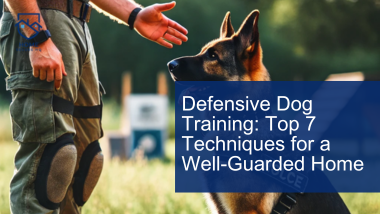
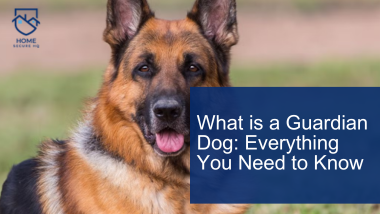

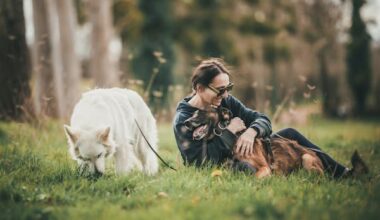
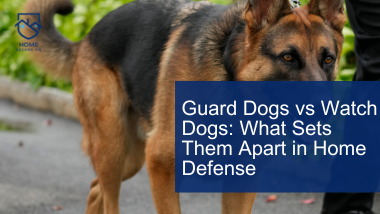
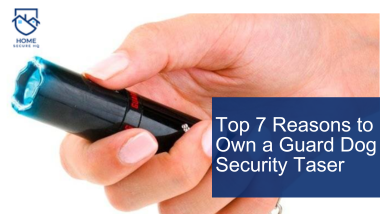

6 comments
Insanont very informative articles or reviews at this time.
THANK YOU.
It’s actually a nice and useful piece of information. I am glad that you simply shared this useful info with us. Please keep us informed like this. Thanks for sharing.
Thank you too
Hi, i believe that i saw you visited my web site thus i came to “return the desire”.I’m trying to to find things to improve my website!I suppose its good enough to use some of your ideas!!
Yes and Thank you
Comments are closed.